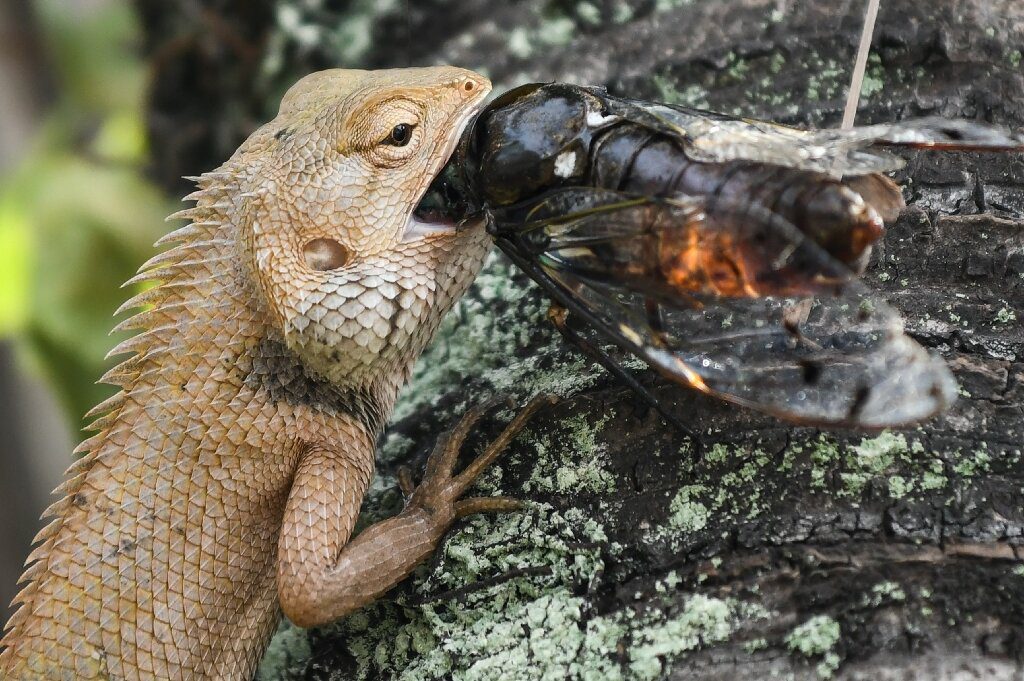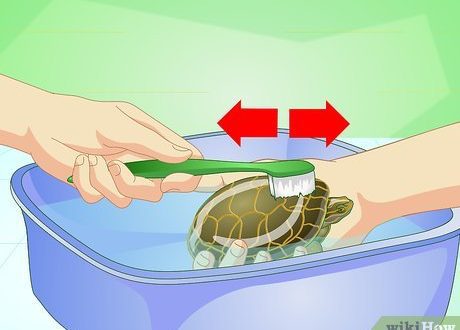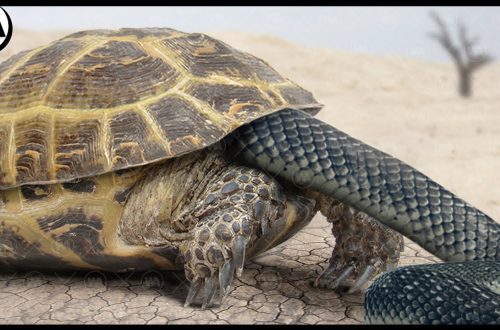
Food base for predatory reptiles.
The biggest problems with the search and selection of food arise precisely among the owners of predatory representatives of reptiles. It is necessary to initially become well acquainted with the needs of a particular species in a particular feed, because each species has its own preferences related to their living conditions and nutrition in the wild.
For example, snakes are mostly carnivorous reptiles. Small-sized representatives feed on mice, rats. The larger the snake, the larger its prey can be (guinea pigs, rabbits, birds, ungulates). But there are species of snakes that, according to their natural desire, prefer to eat insects, other reptiles (lizards, snakes), or, for example, tend to destroy bird nests and make up their diet from eggs.
Predatory turtles are mainly aquatic species, and therefore their diet is made up of fish, shellfish and a small part of other seafood.
But the diet of lizards is very diverse. There are also complete vegetarians (for example, green iguana), and predators (for example, monitor lizards), and insectivores (chameleons), and reptiles with a mixed diet (blue-tongued skink). Therefore, you need to make a diet specifically for your species, based on natural food preferences.
Most often, over time, it becomes easier for owners to breed food at home so that at the right time the pet does not remain hungry.
Consider the most common representatives of the reptile food base, their maintenance and breeding.
Of the warm-blooded, most often bred mice. They are food for medium-sized snakes, monitor lizards and other lizards and turtles. Eating a whole mouse, the animal receives a complete and balanced diet containing calcium and other minerals and vitamins. But this is provided that the diet of mice, in turn, was complete and balanced. You can feed both living and non-living. (If mice have been frozen, they should of course be thawed and warmed to body temperature before feeding.) Many refuse to feed live rodents, as prey can cause injury to the pet. With a lack of any vitamins in the body of a reptile, vitamins are administered in the form of injections to mice and fed with such an “enriched” feed.
For a comfortable stay, good health, mice should not be kept crowded. In a small box, approximately 40 × 40, you can put 5 females and one male. It is better to use sawdust as bedding, they absorb moisture well and do not generate much dust. But you need to monitor hygiene and change the filler as it gets dirty. Room temperature is sufficient, the cage must be ventilated. But do not allow drafts and temperatures below 15 degrees. Mice are ready for breeding by 2 months. A pregnant female should be placed in a separate cage. On average, after 20 days, offspring will appear (mice can be 10 or more).
The diet should be as diverse as possible, in addition to the grain mixture, you can feed vegetables and a small amount of fruits that are rich in vitamins.
Among insects, most often the choice falls on crickets. As a rule, this is a house cricket.
For keeping you need a container, about 50 cm high, so that the crickets cannot jump out when you open the lid. It is necessary to provide the container with ventilation (for example, fine mesh on top) and heating (for good reproduction and growth, it is better to keep the temperature at 30 degrees). To prevent the development of fungus, mold and other diseases, the humidity should be around 60%. It is necessary to install shelters in the container, where smaller crickets will hide from large counterparts (it is most convenient to put several paper pallets from under the eggs for this purpose). Periodically, the container must be cleaned to prevent the development of diseases in crickets. Slightly moist ground (soil) is required for laying eggs. Females can lay up to 200 eggs. Depending on the conditions of detention (mostly on temperature), offspring appear from eggs after a period of 12 days to more than two months. And the maturation of larvae to an adult is from one to eight months. In order for crickets to become complete food themselves, they need to be fed as fully and varied as possible. Fruit, vegetables, grass, meat or cat or fish food, rolled oats should be given. Crickets get water either from watery food (for example, vegetables), or you need to put a damp sponge in the container. In a simple bowl of water, insects will drown. As a rule, the composition of the diet does not ensure the usefulness of cricket as a source of all the necessary vitamins and minerals for a reptile. Therefore, before being fed, crickets are rolled in vitamin and mineral top dressings for reptiles, sold in powder form.
Another representative of the food base of reptiles – cockroach.
There are many types of cockroaches. Cockroaches bred as food (Turkmen, marble, Madagascar, etc.), as a rule, do not pose a danger to humans. A container for medium-sized species can be 50×50 in size. Cockroaches love the humidity of a large number of narrow hiding places. Therefore, it is better to fill the bottom with moist soil (for example, a mixture of peat and sand), and install a lot of shelters in the container (using all the same egg trays). The temperature is best maintained within 26-32 degrees, and humidity 70-80%. Ventilation can be provided by using a fine mesh instead of a cover. To prevent an unpleasant smell from such a cockroach “house” it is necessary to regularly clean and disinfect it. As many guess, cockroaches are omnivores. They feed on both meat and vegetable components. You can feed them cat or dog food, fruits, vegetables (from which they will receive vitamins and moisture). It is important to clean up the remains of wet food in time so that mold does not appear. Cockroaches are mostly nocturnal insects. They are shy and fast, so catching an escaped cockroach can sometimes be difficult. Some cockroaches lay eggs (which hatch into nymphs within 1–10 weeks), and some develop nymphs inside the body. Development to a sexually mature individual, depending on the species, can take from less than 2 months to a year.
Ideal food for very small reptiles, young animals, as well as small amphibians. Drosophila fly. The fly is about 5 mm long, and its body is very soft and tender. Breeding flies are not able to fly. They are bred in containers on special nutrient mixtures consisting of fruits, grains and yeast. Usually oatmeal is boiled (you can use milk), fruit puree, yeast and vitamins are added. To make the mixture dense, you can add gelatin. In addition to the feed mixture, dry crumpled paper is placed in the container (it will absorb moisture). The top of the container can also be covered with a paper towel and pressed with a rubber band. From the eggs laid, the flies grow into adults in 2 weeks. Periodically, the feed mixture must be changed to prevent its spoilage and mold. You can feed flies by placing a piece of nutrient mixture with flies on it in the terrarium.
Also, as food for some reptiles, zoophobus. These are the larvae of a large beetle native to South America. Adults are about 1 cm in length with a powerful hard head and strong “jaws”, therefore it is better to feed such insects to large lizards that can bite through the head of a zoophobus, or by first tearing off their heads. To an adult state, the zoophobus develops in a year. A 40x40cm container filled with wet litter (such as peat) with plenty of cover (such as pieces of wood) is suitable for keeping. The beetles lay eggs, and from the eggs a zoophobus develops, which, when it reaches about 5–6 cm in length, pupates (about 2 weeks after hatching). For pupation, the zoophobus is seated in separate containers filled with sawdust. At a temperature of about 27 degrees, pupae appear within 2-3 weeks. And after another three weeks, beetles come out of the pupae.
It is better to use zoofobus as a supplement, and not as a complete diet, as it is quite tough and contains a large amount of fat.
Also, many terrariumists grow snails. Mostly we are talking about garden snails. A glass or plastic container is suitable for keeping them, approximately 40 × 40 in size for 150 snails. The soil should be moist, but not wet; peat, soil, moss can be used as it. It is necessary to maintain moisture by daily spraying. You can plant a non-poisonous plant in the container, or simply install branches on which the snails will climb. The optimum temperature is 20-24 degrees. At this temperature, snails breed, but to start breeding, they need a hibernation period at a temperature of about 5 degrees, lasting 4 months. Snails lay 40–60 eggs, from which, after 2 weeks, young animals hatch. Snails eat fruits, vegetables, grass.
And one more insect that can be found in the terrariumist’s apartment – locust. The desert locust (Schistocerca) is mainly bred. For locusts, a 50x50x50 terrarium is suitable. The temperature for successful reproduction must be maintained at 35-38 degrees. Insects feed on green grass. Also in the terrarium, boxes are organized filled with moist soil about 15 cm thick (for example, peat, soil), in which the locust lays ootheca with eggs. Temperature and humidity must be monitored during the incubation period. Under all conditions, after about 10 days, larvae hatch (which, by the way, can also serve as food for terrarium animals). With sufficient heating and nutrition, locusts are able to breed all year round.





